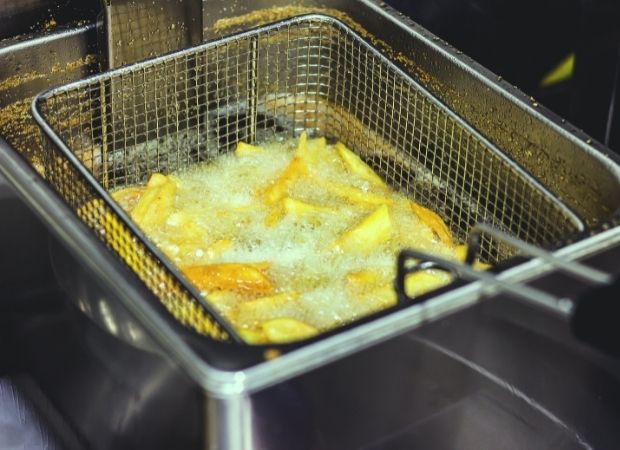First, the good news: it is 100% okay to reuse oil when frying. This is not only great for the bank balance (hallelujah!) but also a lifesaver considering the looming predicted sunflower oil shortage.
Some classics simply aren’t the same without being deep-fried, so to keep your slap chips fresh, deep-fried and in abundance – even during an oil shortage crisis – here are four steps to help you reuse oil effectively and safely.
1. Choose the right oil
Firstly, pick an oil with a high smoking point, such as canola oil, sunflower oil, peanut oil or vegetable oil. This is important because frying occurs at high temperatures and oils with a high smoking point won’t break down too easily. Not only does a high smoking point affect whether fried goods come out crispy and golden but it also determines if the oil can be reused or not.
It is usually never recommended to deep-fry with pure olive oil – it’s far too costly because of the large amounts needed to deep-fry successfully, the low smoking point can be problematic, and it has a dominant flavour profile that can overwhelm the dish.
After deep-frying, allow the oil to cool to a temperature that can be handled safely. Once cooled, strain the oil to remove any leftover sediment. Use a fine-mesh sieve or strainer covered with a cheesecloth or muslin cloth. Store in an airtight container in a cool, dry place, being sure to label and date the oil.
3. How many times can you reuse oil
Oil has no real “set” limit in terms of how many times you can reuse it – keeping in mind the requirements of a high smoking point, and whether it’s been heated and used properly, and been cleaned and stored correctly. However, it is important to note that oil will break down the more you use it, due to its hydrophobic nature. The hydrophobic nature of oil is what allows deep-fried goods to be desirably crisp and golden. The more oil breaks down (i.e. the more you use oil), the less hydrophobic it becomes. This means the oil will seep into your food too rapidly, causing it to be greasy and thus ruining any desired crispness.
Be on the lookout for these signs of “old” oil: visible foam on the top surface of the oil; an inability to reach frying temperatures without smoking; a very dark, dirty appearance; or an off-putting, fishy aroma.
When it’s time to toss the oil, place it in a sealable bag and discard it with your regular trash. Used frying oil can also be recycled, so be sure to check out your local recycling depot for an environmentally-friendly disposal option! Don’t ever be tempted to throw hot or cold oil down the drain! This could result in a costly and avoidable blocked-drained nightmare.

